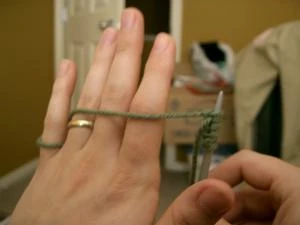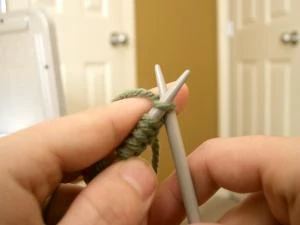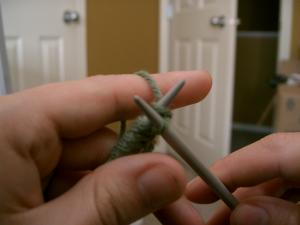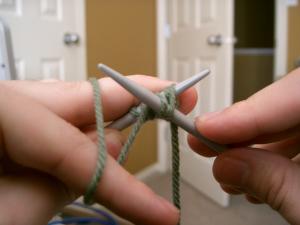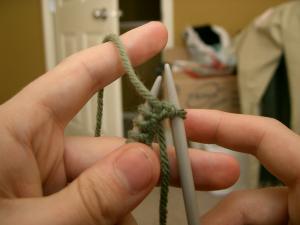The Continental method is a method of knitting primarily associated with European countries. What differentiates the Continental Method from the English Method is that the working yarn is held in the left hand. Now, how you hold the yarn is up to you, but one method is to loop the yarn over the pinky and then over the remaining fingers, as shown:
Of course, in the end, you must simply find a way that allows you to control the working yarn easily while maintaining even Gauge.
The Knit Stitch[]
The Knit stitch begins by holding the working yarn behind the needles.
The Purl Stitch[]
The Purl stitch begins by holding the working yarn in front of the needles.
Advantages/Disadvantages[]
As compared to the English method, the Continental method is generally considered faster once mastered, as it requires less hand movement. In addition, since this method requires more work with the left-hand, hand strain is more evenly distributed. If a person has experience with crochet, he/she may prefer the Continental method as the movements are similar to those used in crochet.
The downside is that it can be more difficult to control the working yarn, thus your Gauge may be uneven. In addition, this method may be difficult for beginners to master, particularly if they are strong right-handers, as it requires some amount of dexterity with the left hand.

